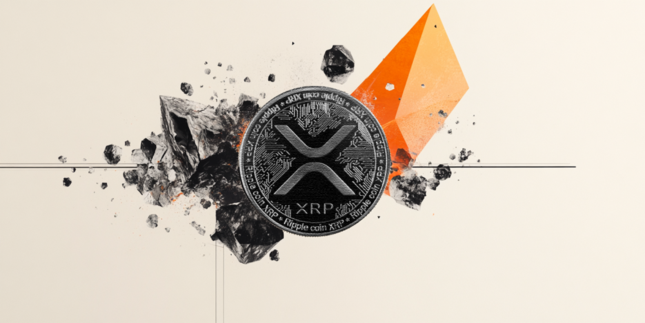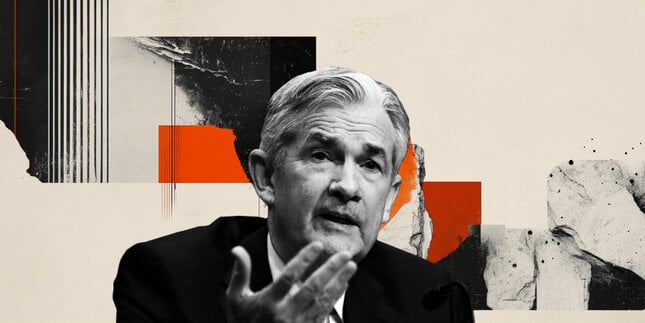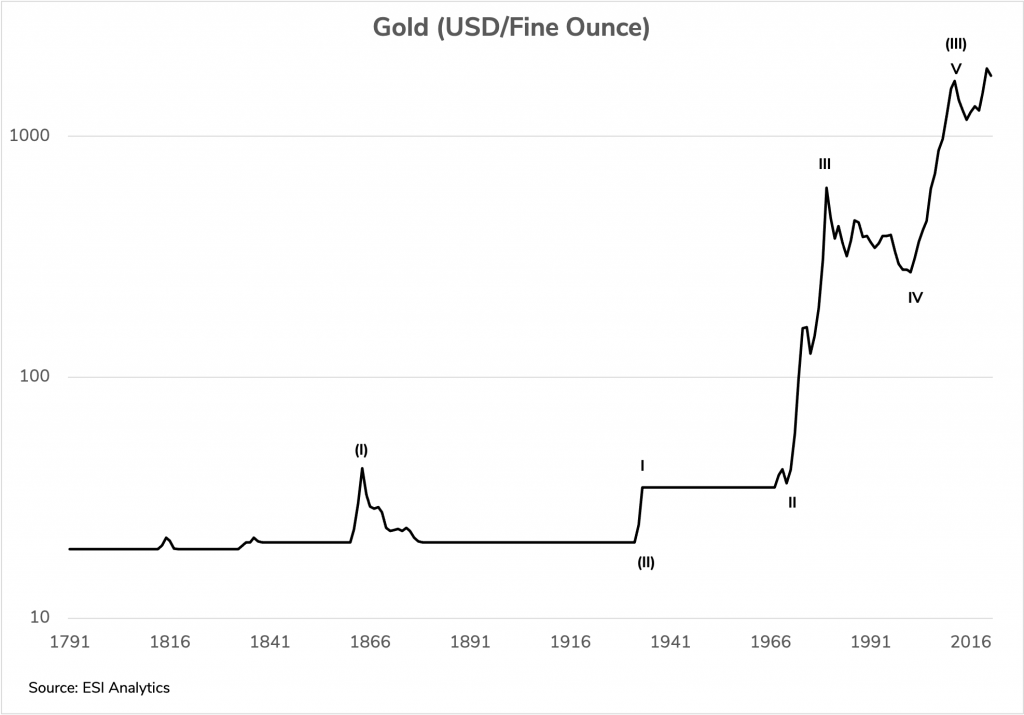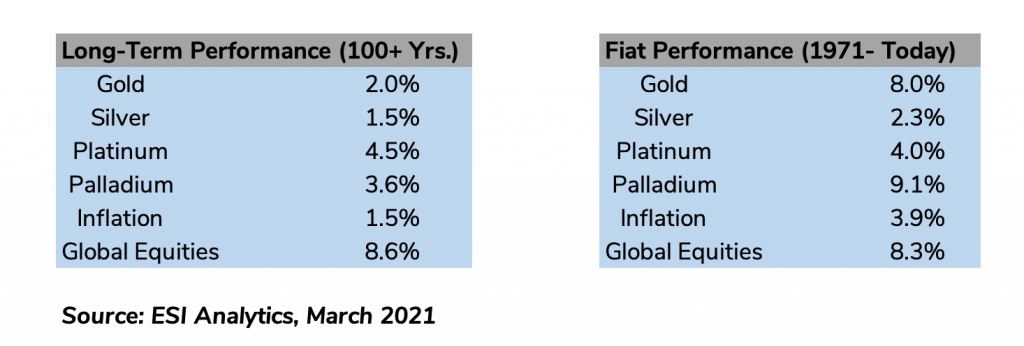The precious metals complex and especially gold is fascinating many investors. Not surprisingly, some myths formed around the asset class. There is a widespread belief that precious metals are a safe haven and protect against inflation. That’s true over the long run but can be costly on short- and medium-term timeframes.
The crucial question is first and foremost, how did precious metals perform in the long-run? Our dataset spans to more than a century of data and reveals a modest but steady long-run result. Silver takes the last spot with an annual yield below 1.5% since 1790. Gold was the second-worst performer and yielded roughly 1.9% per annum over the same timeframe. Palladium and platinum yielded 3.6% and 4.5% respectively since the beginning of the 20th century. All in all, not spectacular gains but an equally-weighted precious metals basket outperformed long-term inflation, as measured by the official U.S. CPI, by roughly 1.4% annually.
It makes sense to split precious metals performance into two distinct periods, pre-fiat and post-fiat, as decoupling major currencies from gold could lead to a different yield regime. Evidence shows that precious metal yields slightly improved since the fiat system was introduced globally at the beginning of the 70s. Palladium was the top performer with 9.1% since then. Gold came up second and yielded 8.0% p.a. Platinum and silver disappointed and the latter did not even maintain purchasing power during the fiat era. Both yielded 4.0% and 2.3% p.a. respectively. An equally-weighted precious metals basket yielded 5.9% annually and outperformed fiat-age inflation by roughly 2% p.a.
A few interesting facts can be gathered from the long-term data. The entire complex moved along a volatile path steadily to the upside. However, it is essential to realize that we are looking at more than a century of data, which means that the visible corrections within the charts were severe. Two corrections were exceptionally painful and lasted five and two decades, respectively. A precious metals basket lost more than 40% of its value from a peak in the 1920s and took roughly five decades to recover in nominal terms. It was not a unique event and the 1980s kicked off a devastating 75% nominal (inflation-unadjusted) loss that took more than two decades to recover. It occurred during the fiat system era, which is contrary to the intuition of many investors. The last significant draw-down unfolded during the Global Financial Crisis in 2008. An equally-weighted precious metals basket lost more than half of its value as the global crisis unfolded.
Evidence debunks several myths around gold and its siblings. Precious metals are a robust store of value over the long term. However, the medium-term character comes as close as it gets to that of a risky asset. Precious metals are not just in terms of their draw-downs short- and medium-term risky assets but also during periods of crises such as the Great Depression and the Global Financial Crisis. Neither the asset class nor its individual components are reliable crisis mitigators and should not be perceived as a safe haven. The long-term analysis shows that precious metals are not as easy to handle as equities. The complex performed positively over the long run but showed disproportionate drawdowns in terms of time and asset value in comparison to a diversified global equities basket.
There is no doubt that precious metals have an economic rationale as a store of value over the long run. However, the key takeaway is that the asset class behaves like a risky asset over short- and medium-term timeframes. The bottom line is that precious metals are not a buy-and-hold substitute to global equities from an evidence-based investment perspective. An efficient long-term equity and bond portfolio can be structured semi-passively. Including a larger passive precious metals component does not add value to that portfolio. Instead, market timing matters significantly for the asset class. Therefore, precious metals are more appropriate for trading secular trends with a bullish bias.
The above is a matter of opinion provided for general information purposes only and is not intended as investment advice. Information and analysis above are derived from sources and utilising methods believed to be reliable, but we cannot accept responsibility for any losses you may incur as a result of this analysis. Individuals should consult with their personal financial advisors. Reproduction without ESI Analytics’ prior consent is strictly forbidden.
Recommended Content
Editors’ Picks

AUD/USD weighed down by China, tariffs
AUD/USD remained on the back foot, slipping back to the area of multi-year lows around 0.5950 on the back of mounting fears surrounding tariffs and their impact on the Chinese economy.

EUR/USD refocuses on 1.1000 amid tariffs jitters
EUR/USD reversed two daily pullbacks in a row an d managed to advance to the boundaries of the 1.1000 barrier on the back of fresh weakness hurting the US Dollar and persistent tariff fears.

Gold erases gains, back to the $2,980 zone
Gold prices now lose extra ground and slip back to the area of daily troughs near $2,980 mark per troy ounce following an unsuccesful attempt to maintain the trade above the critical $3,000 level earlier in the day.

XRP drops 3% as Ripple announces $1.25 billion acquisition of prime brokerage firm Hidden Road
Ripple announced on Tuesday that it is acquiring prime brokerage firm Hidden Road to enhance its institutional offerings and increase the adoption of the RLUSD stablecoin and the XRP Ledger (XRPL).

The Fed is looking at a hefty price level
We are still in thrall to tariffs, the faux-macro “data” driving markets. The WSJ editorial board advised other countries to take their tariffs to zero so that Trump’s “reciprocal” tariffs will have to be zero, too. Cute, but no cigar.

The Best brokers to trade EUR/USD
SPONSORED Discover the top brokers for trading EUR/USD in 2025. Our list features brokers with competitive spreads, fast execution, and powerful platforms. Whether you're a beginner or an expert, find the right partner to navigate the dynamic Forex market.

